What Is Eutrophication?
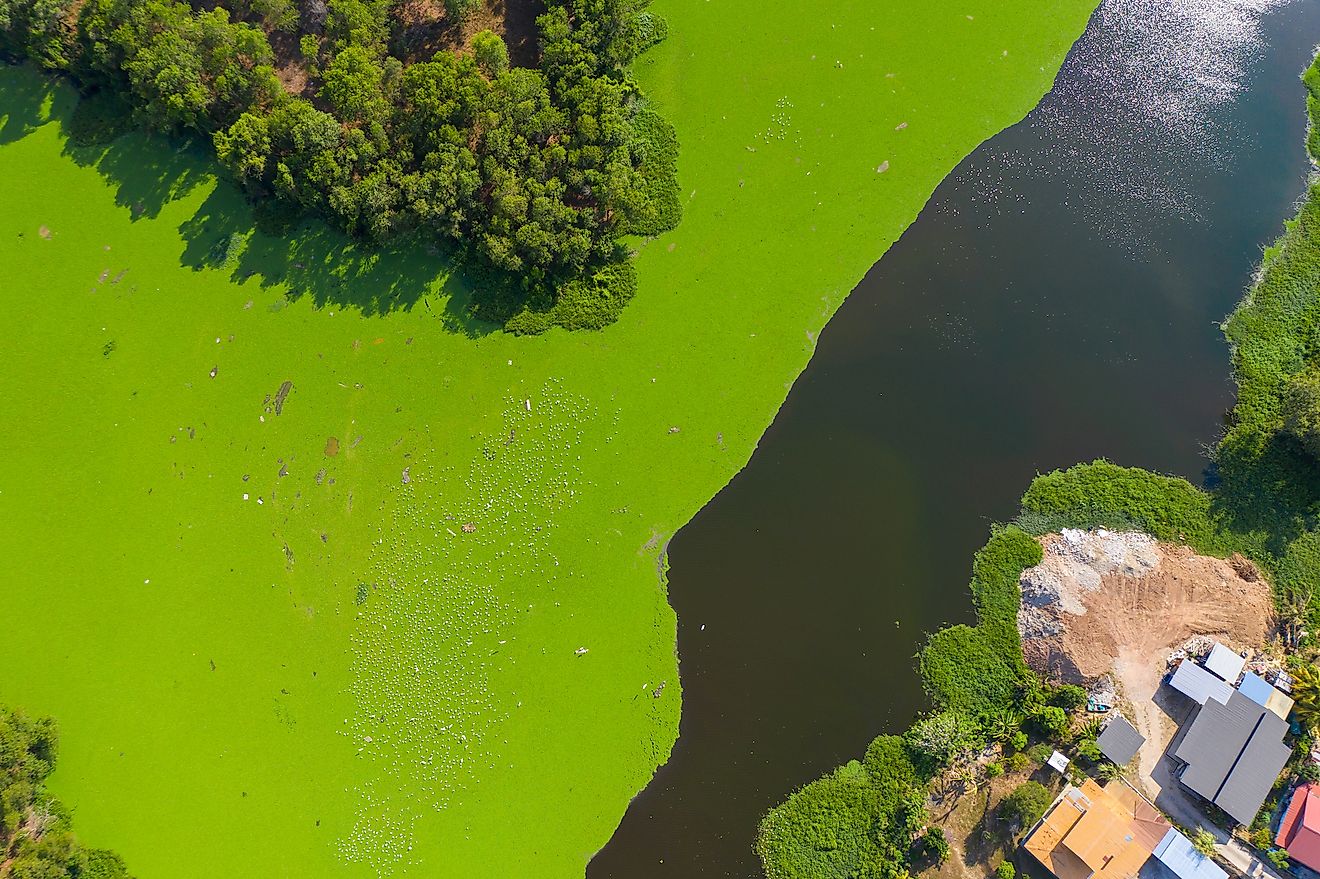
- Eutrophication is a process of enrichment of water bodies by inorganic nutrients leading to excessive plant and algal growth.
- Eutrophication is predominantly caused by anthropogenic activities like the use of nutrient-rich chemical fertilizers and pesticides, that are washed away by rains into the nearby lakes and rivers.
- Eutrophication leads to the deterioration of water quality due to harmful algal bloom, creating dead zones.
Eutrophication is a process by which a water body becomes over-enriched with inorganic nutrients that leads to excessive growth of algae and aquatic phytoplankton. Eutrophication is therefore a serious environmental hazard and is considered to be the most widespread ecological problem affecting a majority of the Earth’s water bodies. Anthropogenic activities that involve modern farming techniques and excessive use of fertilizers rich in nitrogen and phosphorus throughout the world have resulted in the natural eutrophication of most water bodies. Eutrophication thus results in the deterioration of the quality of water and the depletion of dissolved oxygen in the water bodies. Over the years, these eutrophic water bodies turn into "dead zones" and become incapable of supporting aquatic flora and fauna.
The aquatic systems can be categorized into three types, based on their nutrition status and productivity. These are:
- Oligotrophic: refers to those water bodies that have poor/limited nutrient content and productivity.
- Mesotrophic: refers to those water bodies that have moderate nutrient content and productivity.
- Eutrophic: refers to those water bodies that have rich nutrient content as well as very high productivity.
As per a survey conducted by the International Lake Environment Committee, for studying the State of the World's Lakes, it has been found that about 48% lakes in North America, 41% in South America, 28% in Africa, 54% in Asia and about 53% in Europe have been affected by eutrophication.
Causes Of Eutrophication
Eutrophication is mainly caused by two major factors namely, human activities and natural processes.
1. Anthropogenic/ Cultural Eutrophication
This type of eutrophication is mainly caused by humans and their activities, which results in the influx of nutrients into the water bodies from both point and non-point discharge sources. The huge demand for industrial and agricultural expansion to meet the rapidly rising human population has also led to deforestation. This eventually leads to the erosion and transportation of nutrient-rich soils into the aqueous bodies.
- Point source refers to those contaminants that enter the water bodies from a single source. For example, the sewage discharges from factories, power plants, industries, and wastewater treatment plants.
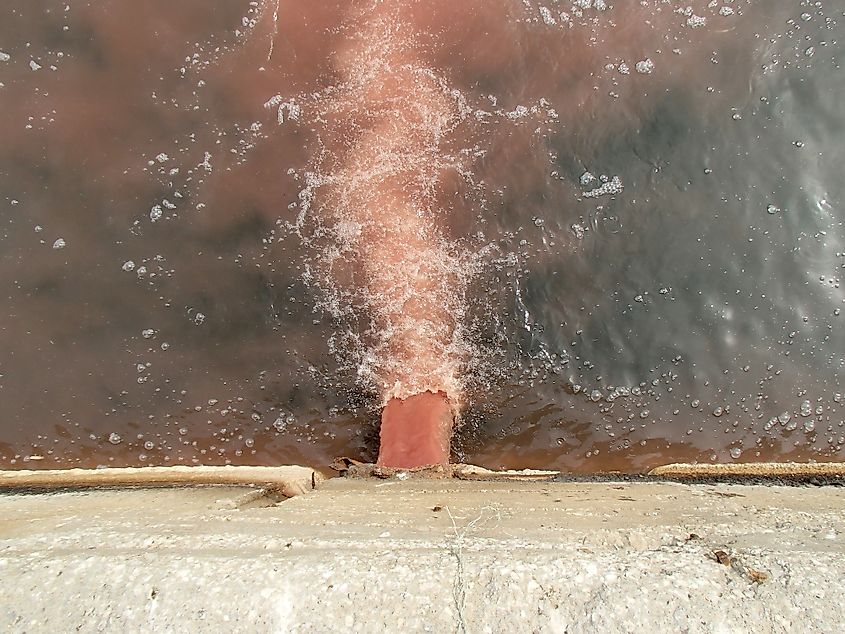
- Non-point source refers to those contaminants that enter the water bodies from widespread sources that have no specific discharge points. For example, nitrogen-rich chemical fertilizers, pesticides, and animal wastes, along with phosphorus-based detergents and untreated human sewage, are eventually washed away by rains or by irrigation into the nearby lakes and rivers. Upon introduction into the aquatic ecosystems, these supply rich nutrients to the algae and planktons, resulting in eutrophication of the water bodies.
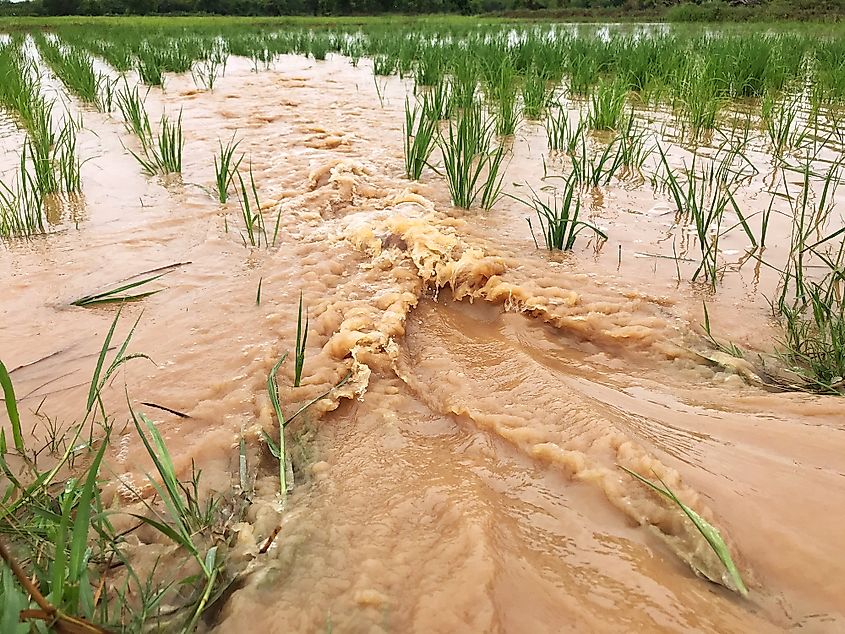
2. Natural Eutrophication
Natural processes like the flooding of lakes and rivers wash away the nutrient-enriched soil from the surrounding areas. This nutrient-rich soil leads to sedimentation and also promotes the growth of algae in the water bodies. This results in a decrease in water quality and a subsequent increase in eutrophication. The nutrition content of aquatic systems gradually increases with an increase in the age of the water body and hence the process of natural eutrophication occurs very slowly in comparison to anthropogenic eutrophication.
Consequences Of Eutrophication
In a nutshell, the adverse effects of eutrophication include an increase in the toxicity of the water bodies and a decrease in biodiversity. Some of the undesirable consequences of eutrophication are listed below:
Excessive Growth Of Algae And Plankton
When the water bodies become enriched by nutrients, the growth of algae and plankton are favored due to the greater availability of one or more growth factors that are required for performing photosynthesis. The extensive algal blooms inhibit the penetration of sunlight at the lower depths of the water body. This decreases the productivity of many aquatic plants and destroys the benthic habitat by shading the submerged vegetation.
Large Biomass Of Dead Algae
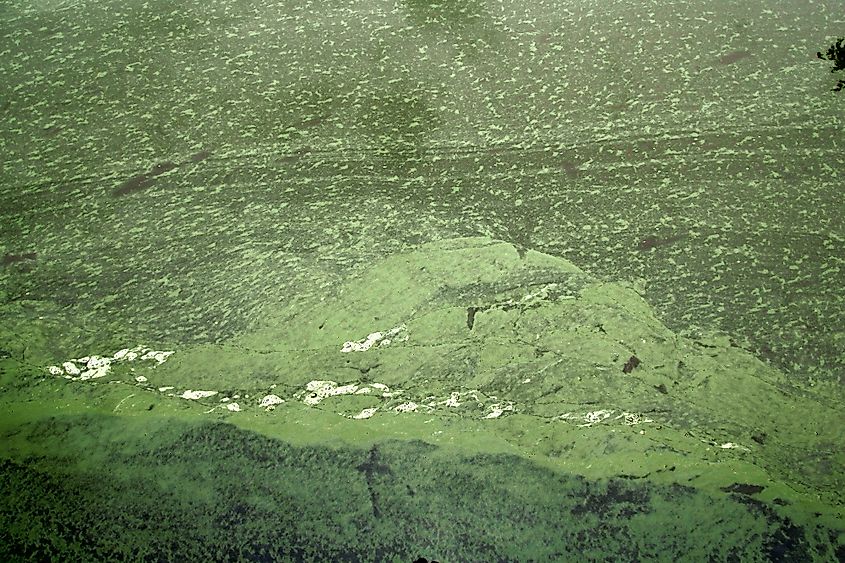
The excessive algal growth is also accompanied by the generation of a large biomass of dead algae. These dead algae sink to the bottom of the water body where they are broken down by the anaerobic decomposers, consuming high amounts of oxygen in the process. This overconsumption of oxygen leads to the formation of hypoxic conditions. At lower levels of the water bodies, this leads to the suffocation and death of large aquatic fauna. The algal bloom also leads to the clogging of the water filters that are used during the water treatment process.
Toxins Released Into Water Body
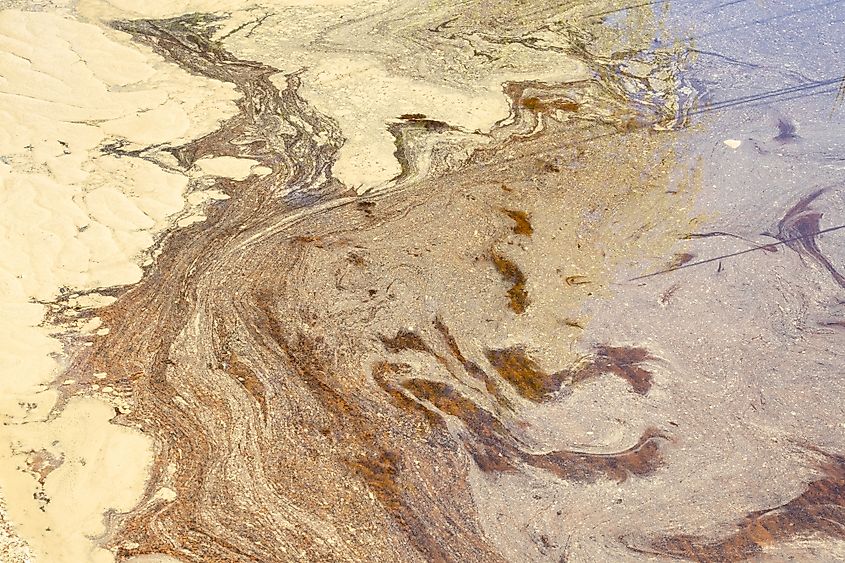
Eutrophic waters in the ocean. Image credit: A.j.K/Shutterstock.com
The anaerobic decomposition of the organic matter releases hydrogen sulfide, methane, and ammonia which generates odor and toxicity of the water bodies. The algae also release neurotoxins and hepatotoxins that alter several biogeochemical processes significantly affecting aquatic and human life.
Changes In Community Structure
The introduction of nutrients by human activities have led to changes in the community structure, and the decline in species richness and dominance of macrophytes. For example, when nitrogen-deficient water suddenly gets enriched with it, many competitive species relocates to the water bodies and gradually out-compete the original species inhabiting the aquatic ecosystem.
Enhanced Water Acidification
The decomposition of organic matter also leads to increased production of carbon-dioxide, enhancing water acidification, increasing turbidity, and deteriorating the water quality in the aqueous systems.
Economy Adversely Affected
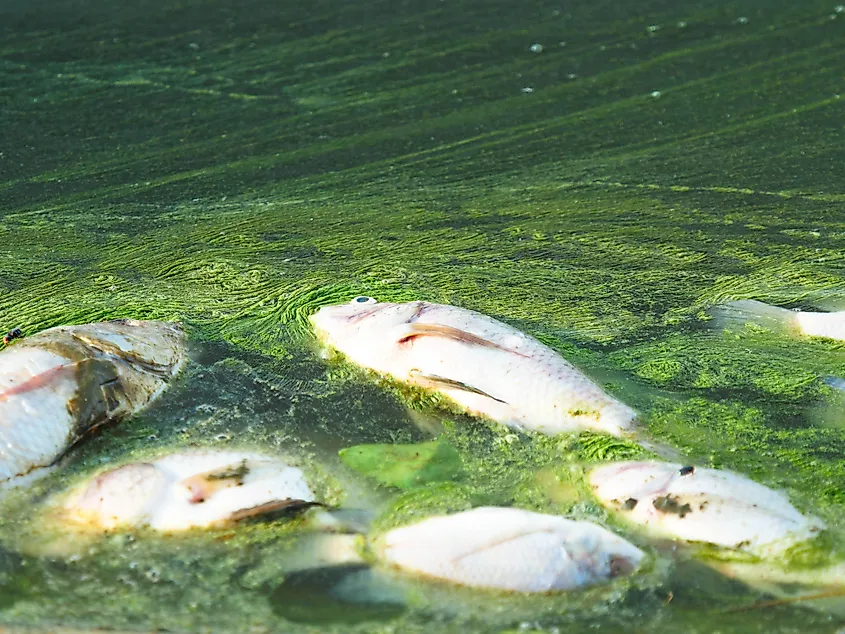
Dead fish floating in an algae bloom. Image credit: O partime photo/Shutterstock.com
The hypoxic conditions have led to the mortality of several bivalves, crustaceans, echinoderms, and also the loss of benthic fish-diversity. The widespread death of fishes and other aquatic fauna due to increased toxicity and clogging of fish gills has a detrimental impact on fishing resources and the national economy. Aquaculturists intentionally add more fertilizers to the water bodies and make them eutrophic to enhance the primary production and increase the amount of economically and recreationally important fishes.
Ecological Balance Disturbed
The process of eutrophication destroys the intricate ecological balance of the aquatic ecosystems and decreases the biodiversity of the ecosystem by killing several important aquatic species. It also affects the vertical structure of the water body and the biology of freshwater organisms.
Coral Reefs Destroyed
Coral reefs are also severely affected due to eutrophication. The algal blooms release organic compounds that promote microbial activity on coral surfaces leading to mortality of corals. Also, there is a complete loss of branching corals and high reductions in the richness, abundance, and diversity of the fish-communities that were associated with the coral reefs.
Aesthetic Quality Of Water Bodies Lost
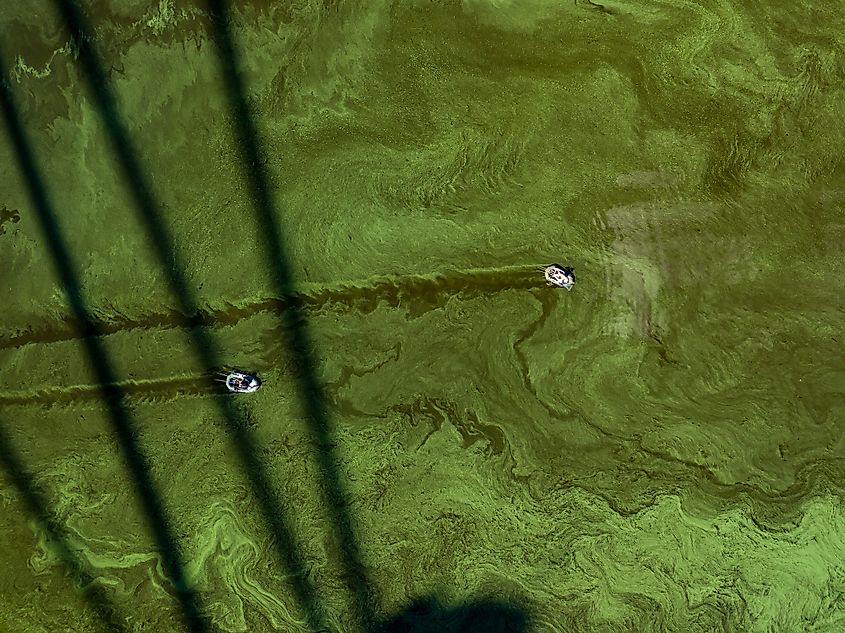
The eutrophic water bodies with abundant phytoplankton, bacteria, fungi, zooplankton, and debris, also lose their transparencies and develop obnoxious pungent smell and discoloration. This significantly diminishes the aesthetic value of the water bodies.
Prevention Of Eutrophication
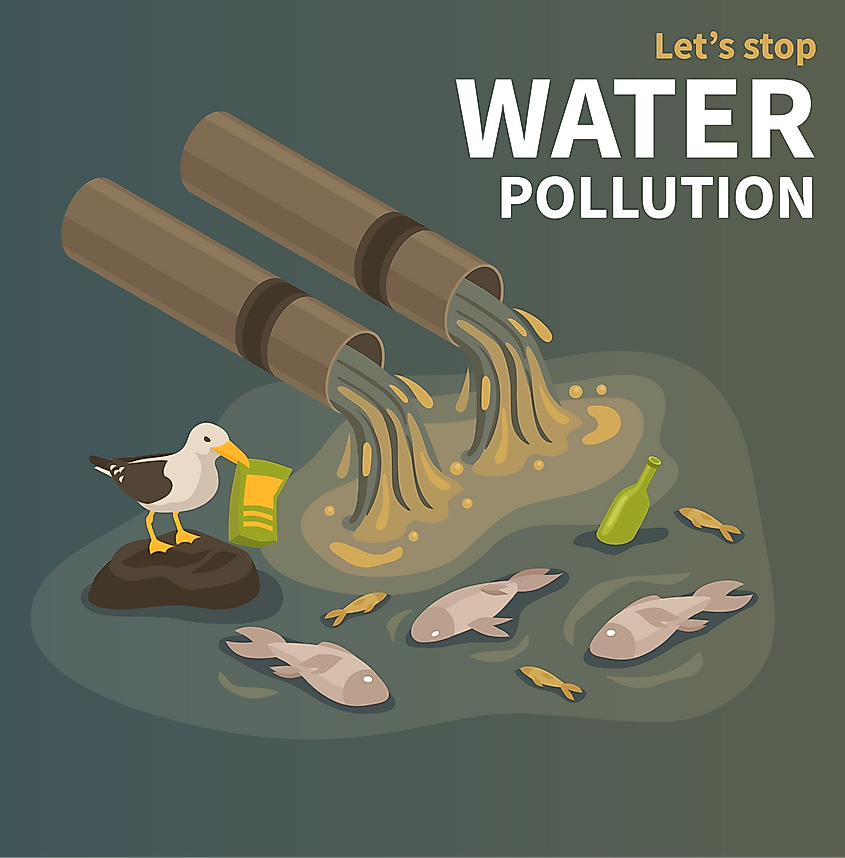
As discussed above, the widespread degradation in water quality and nutrient enrichment, caused due to eutrophication poses a serious threat to the aquatic ecosystems. The proper management of the eutrophication process is complex and can be accomplished only by the collective efforts of scientists, policymakers, and general citizens. Nevertheless, eutrophication can be controlled by adopting the following measures:
- Avoiding the overuse of fertilizers and using alternative agricultural methods with careful, efficient, and well-timed application of fertilizers
- Use of phosphate-free detergents and preventing the inflow of phosphorus-rich substances into the water bodies.
- Wastewaters should be released into the water bodies only after proper treatment and the purifying performance of sewage treatment plants should be improved to reduce the concentration of nutrients.
- Decreasing soil erosion and associated transport of fertilizers by adopting available soil-conservation strategies.
- Installation of effective Phyto-Purification plants and vegetation buffers along the rivers and streams. The plants will slow down the erosion and also take up some of the excessive nutrients themselves.
- The proper channeling of agricultural wastes also helps in preventing eutrophication.
- The algal growth can be controlled by applying algaecides like copper-sulfate. However, the use of algaecides also poses a significant risk for humans, livestock, and other non-target aquatic organisms.
- For the restoration of the already eutrophic water bodies, techniques like drainage of the affected water, oxygenation of the water, chemical removal of the phosphorus content, and effective treatment of water; must be adopted for controlling eutrophication.
- Public awareness campaigns must be organized for tackling the eutrophication problems.











